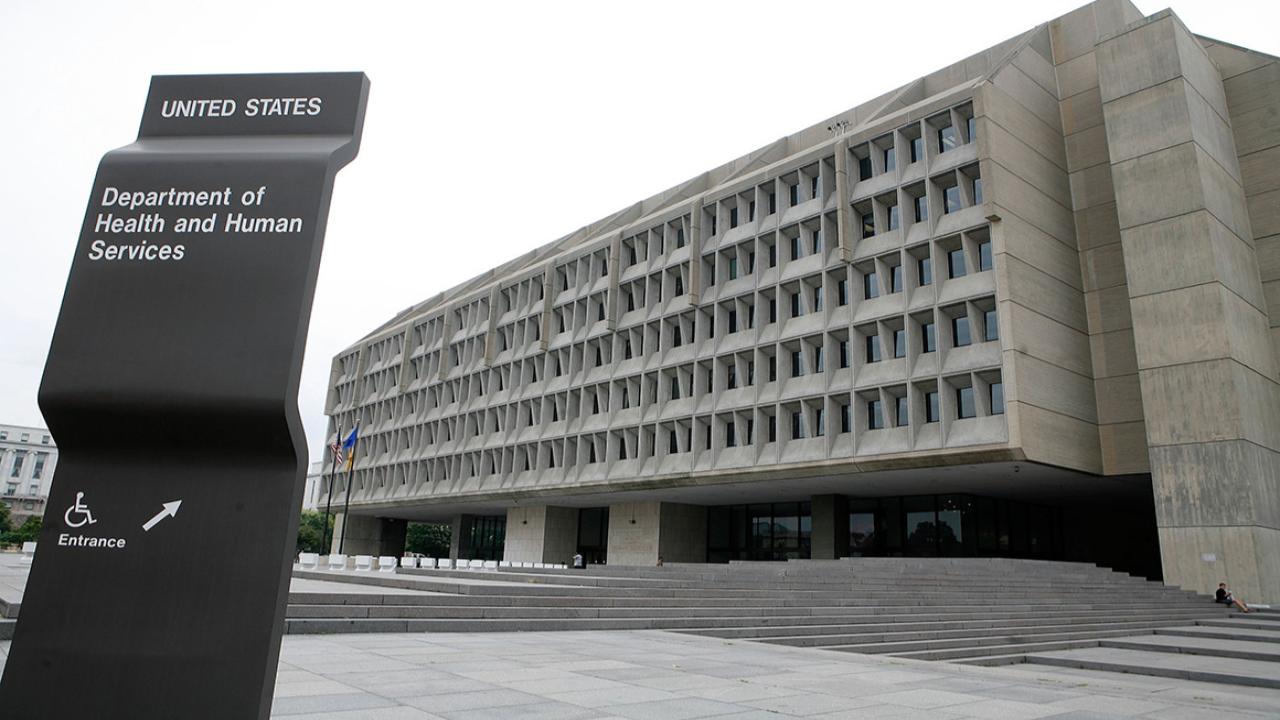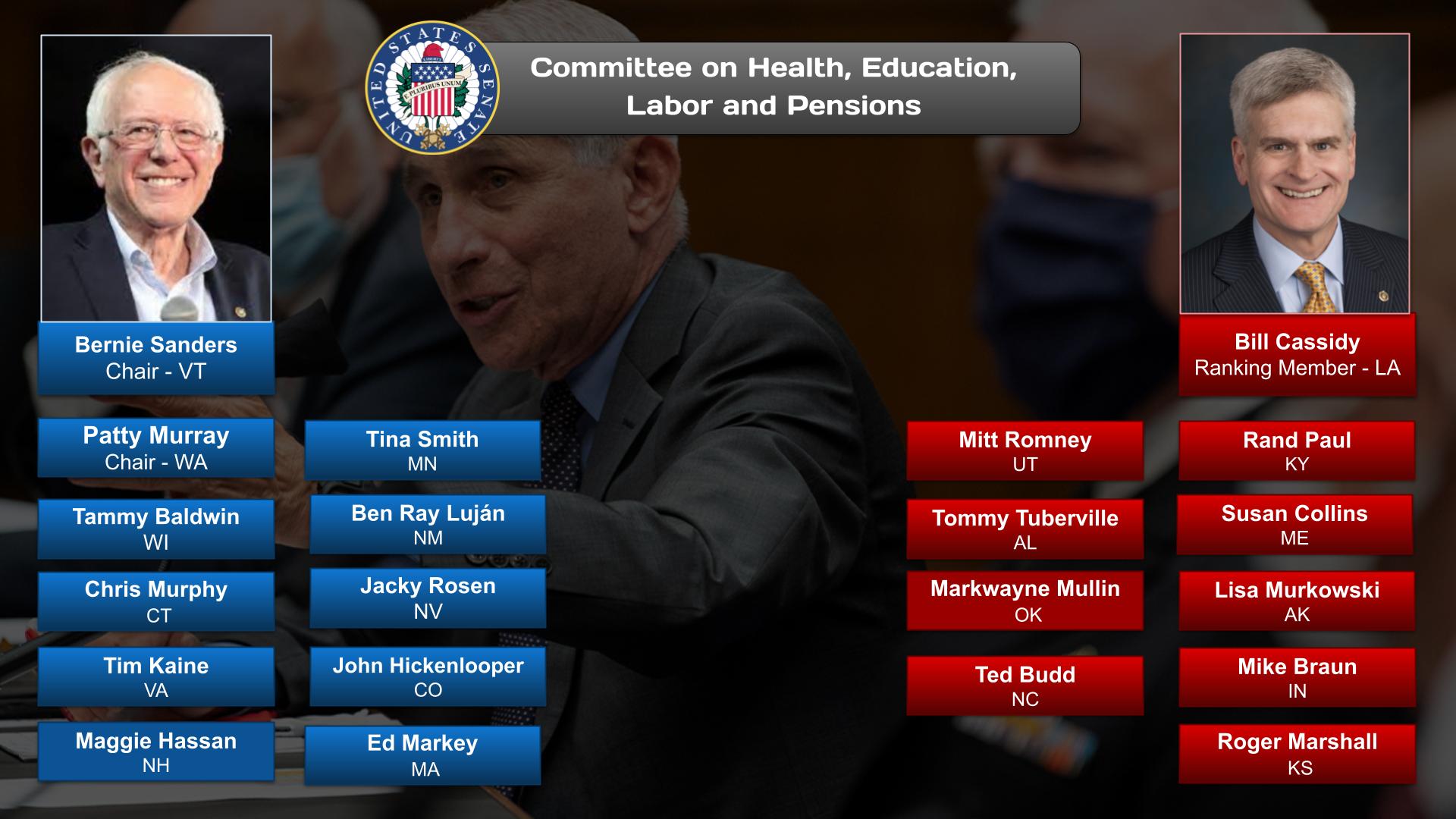Summary
This post on Infectious Diseases is 1 of 3 issues that US onAir curators are focusing on in the Healthcare category.
Infectious diseases or ID, also known as infectiology, is a medical specialty dealing with the diagnosis and treatment of infections. An infectious diseases specialist’s practice consists of managing nosocomial (healthcare-acquired) infections or community-acquired infections. An ID specialist investigates and determines the cause of a disease (bacteria, virus, parasite, fungus or prions). Once the cause is known, an ID specialist can then run various tests to determine the best drug to treat the disease. While infectious diseases have always been around, the infectious disease specialty did not exist until the late 1900s after scientists and physicians in the 19th century paved the way with research on the sources of infectious disease and the development of vaccines.
OnAir Post: Infectious Diseases
News
About
Check the Healthcare post for the party positions, committees, government agencies related to Infectious Diseases issues.
Challenges
Antimicrobial Resistance
- Emergence and spread of bacteria, viruses, and fungi that are resistant to available antimicrobial agents, making infections more difficult to treat.
- Overuse and misuse of antibiotics contribute to the development of resistance.
2. Emerging and Reemerging Infectious Diseases
- Novel pathogens and zoonotic diseases pose a significant threat.
- Climate change, international travel, and globalization facilitate the spread of infectious diseases.
- Examples include COVID-19, Zika virus, and antimicrobial-resistant gonorrhea.
3. Health Disparities
- Infectious diseases disproportionately affect certain populations, including:
- Low-income communities
- Racial and ethnic minorities
- Individuals with weakened immune systems
- Barriers to healthcare access and social determinants of health contribute to these disparities.
4. Health System Preparedness
- Insufficient pandemic preparedness and response capacity, as evidenced by the COVID-19 pandemic.
- Need for strengthened surveillance systems, healthcare worker training, and infrastructure investments.
5. Public Health Surveillance
- Inadequate surveillance and reporting systems hinder early detection and response to outbreaks.
- Improvements in real-time data collection, analysis, and sharing are crucial.
6. Diagnostic Delays
- Delays in diagnosing and treating infectious diseases can lead to worse outcomes.
- Limited access to testing and long turnaround times contribute to these delays.
7. Vaccine Hesitancy
- Resistance to vaccination poses a major threat to public health.
- Misinformation and distrust undermine vaccine confidence, resulting in outbreaks of vaccine-preventable diseases.
8. Antimicrobial Stewardship
- Ensuring appropriate use of antimicrobial agents to preserve their effectiveness.
- Programs focus on educating healthcare providers and patients about antimicrobial resistance and promoting responsible prescribing practices.
9. Zoonotic Diseases
- Infections that can be transmitted from animals to humans, such as influenza and rabies.
- Globalization and environmental changes increase the risk of zoonotic outbreaks.
10. Pandemic Preparedness
- Strengthening surveillance, response systems, vaccine development, and international collaboration to mitigate the impact of future pandemics.
- Investments in research and innovation are essential for ongoing preparedness.
Source: Google Search + Gemini + onAir curation
Solutions
Surveillance and Monitoring:
- Strengthen disease surveillance systems to detect and respond to emerging infections early.
- Enhance data-sharing and collaboration among public health agencies and healthcare providers.
- Invest in real-time monitoring and early warning systems for infectious disease outbreaks.
2. Prevention and Vaccination:
- Increase vaccination rates for preventable diseases.
- Develop and implement comprehensive immunization programs targeting underserved populations.
- Promote safe hygiene practices and infection control measures.
- Accelerate research and development of new vaccines and therapeutics.
3. Healthcare Capacity and Workforce:
- Enhance healthcare infrastructure, including intensive care units, isolation rooms, and personal protective equipment (PPE) supplies.
- Train and expand the healthcare workforce in infectious disease management and outbreak response.
- Improve access to healthcare services, especially for vulnerable populations.
4. Antibiotic Resistance:
- Implement comprehensive antimicrobial stewardship programs to reduce inappropriate antibiotic use.
- Develop and promote new antibiotics and alternative treatments to combat antibiotic-resistant infections.
- Monitor and track antibiotic resistance patterns to guide treatment decisions.
5. Emerging Infections Research:
- Increase funding for basic and applied research on emerging infectious diseases.
- Focus on understanding the epidemiology, transmission, and pathogenesis of new threats.
- Foster collaboration between academia, industry, and government to accelerate research and development.
6. Global Health Security:
- Strengthen international partnerships to monitor and respond to infectious disease outbreaks globally.
- Support capacity building in low- and middle-income countries.
- Promote disease surveillance and border health measures to prevent the spread of infectious diseases.
7. Public Health Education and Communication:
- Implement effective public health campaigns to raise awareness of infectious diseases and preventive measures.
- Use social media and traditional media to disseminate accurate information and combat misinformation.
- Empower individuals to take responsibility for their own health and the health of their community.
8. Surveillance and Tracking Technologies:
- Utilize technology, such as genomic sequencing and artificial intelligence, to enhance disease detection, tracking, and outbreak management.
- Develop mobile apps and other tools to encourage self-reporting and increase public participation in surveillance efforts.
9. Healthcare Infrastructure and Technology:
- Invest in cutting-edge healthcare technologies, such as telemedicine and electronic health records, to improve disease management and response.
- Use data analytics and modeling to predict and mitigate infectious disease outbreaks.
10. Interdisciplinary Collaboration:
- Foster collaboration among experts in infectious diseases, public health, healthcare, veterinary medicine, and other fields.
- Break down silos and promote a holistic approach to infectious disease management.
- Engage community leaders, policymakers, and the healthcare industry in coordinated efforts.
Source: Google Search + Gemini + onAir curation
Websites
Centers for Disease Control and Prevention (CDC):
- https://www.cdc.gov/
National Institutes of Health (NIH):
- https://www.nih.gov/
Food and Drug Administration (FDA):
- https://www.fda.gov/
Centers for Medicare & Medicaid Services (CMS):
- https://www.cms.gov/
Agency for Healthcare Research and Quality (AHRQ):
- https://www.ahrq.gov/
National Center for Health Statistics (NCHS):
- https://www.cdc.gov/nchs/
National Library of Medicine (NLM):
- https://www.ncbi.nlm.nih.gov/
American Public Health Association (APHA):
- https://www.apha.org/
Infectious Diseases Society of America (IDSA):
- https://www.idsociety.org/
Society for Healthcare Epidemiology of America (SHEA):
- https://www.shea-online.org/
Association for Professionals in Infection Control and Epidemiology (APIC):
- https://www.apic.org/
Other Resources:
- Global Infectious Disease Epidemiology Network (GID-Net): https://www.gid-net.com/
- World Health Organization (WHO): https://www.who.int/
- European Centre for Disease Prevention and Control (ECDC): https://www.ecdc.europa.eu/
Source: Google Search + Gemini + onAir curation
Legislation
Laws
Source: Google Search + Gemini + onAir curation
Public Health Service Act (1944)
- Established the Public Health Service (PHS) within the Department of Health and Human Services (HHS).
- Empowered the PHS to conduct research, provide public health services, and control and prevent the spread of infectious diseases.
2. Biomedical Research and Development Act (1985)
- Established the National Institutes of Health (NIH) as the primary federal agency responsible for conducting biomedical research.
- Provided funding for basic and clinical research on infectious diseases.
3. Ryan White CARE Act (1990)
- Provides federal funding for programs that support care and treatment for individuals living with HIV/AIDS.
- Includes provisions for research, prevention, and outreach activities related to HIV/AIDS.
4. Pandemic and All-Hazards Preparedness Reauthorization Act (2013)
- Established the Office of the Assistant Secretary for Preparedness and Response (ASPR) within HHS.
- Provided funding for hospital preparedness, vaccine development, and other emergency response activities related to infectious diseases.
5. Public Health Emergency Preparedness and Response Act (2006)
- Outlined the roles of federal, state, and local governments in responding to public health emergencies, including infectious disease outbreaks.
- Provided funding for stockpiling of medical supplies and the development of emergency response plans.
6. Global Health Security Act (2019)
- Established the Global Health Security Agenda to improve global capacity for preventing, detecting, and responding to infectious disease threats.
- Provided funding for international cooperation, research, and training.
7. CARES Act (2020)
- Provided emergency funding for COVID-19 response, including vaccine development, testing, and treatment.
- Established a public health emergency fund to support future infectious disease outbreaks.
8. American Rescue Plan Act (2021)
- Allocated additional funding for COVID-19 response, including vaccination programs, economic relief, and public health infrastructure.
- Included funding for research on emerging infectious diseases.
New Bills Introduced 2023-2024
Source: Google Search + Gemini + onAir curation
Sampling of Bills:
H.R.185 — To terminate the requirement imposed by the Director of the Centers for Disease Control and Prevention for proof of COVID-19 vaccination for foreign travelers, and for other purposes.
Sponsor: Massie, Thomas [Rep.-R-KY-4] (Introduced 01/09/2023)
Cosponsors: (32)
Committees: House – Energy and Commerce
Latest Action: Senate – 02/13/2023 Read the second time. Placed on Senate Legislative Calendar under General Orders. Calendar No. 14. (All Actions)
S.2538 —Regional Biocontainment Laboratory Authorization Act of 2023
Sponsor: Casey, Robert P., Jr. [Sen.-D-PA] (Introduced 07/26/2023)
Cosponsors: (1)
Committees: Senate – Health, Education, Labor, and Pensions
Latest Action: Senate – 07/26/2023 Read twice and referred to the Committee on Health, Education, Labor, and Pensions. (All Actions)
H.R.1768 — NIH Reform Act
Sponsor: Roy, Chip [Rep.-R-TX-21] (Introduced 03/23/2023)
Cosponsors: (16)
Committees: House – Energy and Commerce
Latest Action: House – 03/31/2023 Referred to the Subcommittee on Health. (All Actions)
H.R.4420 — Preparedness and Response Reauthorization Act
Sponsor: Hudson, Richard [Rep.-R-NC-9] (Introduced 06/30/2023)
Cosponsors: (0)
Committees: House – Energy and Commerce
Latest Action: House – 07/19/2023 Ordered to be Reported (Amended) by the Yeas and Nays: 27 – 22. (All Actions)
21st Century Cures Act Reauthorization (H.R. 2/S. 19)
- Extends funding for the National Institutes of Health (NIH) and other agencies responsible for biomedical research.
- Supports the development of diagnostics, treatments, and vaccines for infectious diseases.
- Encourages the use of artificial intelligence and machine learning to enhance disease surveillance and outbreak response.
Pandemic and All-Hazards Preparedness and Advancing Innovation Act of 2023 (S. 277)
- Establishes the National Center for Pandemic Preparedness and Innovation at the NIH.
- Funds research on pandemic preparedness and response, including early detection and prevention measures.
- Supports the development of vaccines and other medical countermeasures for emerging pathogens.
Strengthening the Global Health Security Workforce Act (H.R. 1001/S. 598)
- Invests in training and education for healthcare professionals working in global health security.
- Supports the development of a workforce capable of responding to infectious disease threats and pandemics.
- Encourages collaboration with international partners to strengthen global health security capacity.
National Institutes of Health Revitalization Act of 2023 (H.R. 2900/S. 1461)
- Increases funding for the NIH, including its infectious disease research programs.
- Supports the modernization of the NIH’s infrastructure and research tools.
- Encourages interdisciplinary approaches to infectious disease research and innovation.
Pandemic Preparedness and Response Act of 2023 (H.R. 359/S. 1128)
- Establishes a pandemic preparedness and response fund within the Centers for Disease Control and Prevention (CDC).
- Supports the development of surveillance systems, diagnostic tools, and other resources for outbreak preparedness and response.
- Encourages collaboration with state and local health departments.
International Infectious Disease Prevention and Control Act (H.R. 396/S. 255)
- Supports international efforts to prevent and control infectious disease outbreaks.
- Funds programs to strengthen health systems in developing countries and support global disease surveillance.
- Promotes collaboration with international organizations and other countries.
Health Security for Americans Act (H.R. 1193/S. 498)
- Establishes a health security preparedness and response program within the Department of Homeland Security.
- Supports the development of countermeasures for biological threats, including infectious diseases.
- Encourages coordination with other federal agencies and state and local governments.
Committees, Agencies, & Programs
Committees
Source: Google Search + Gemini + onAir curation
House of Representatives
- Energy and Commerce Committee, Subcommittee on Health
- Appropriations Subcommittee on Labor, Health and Human Services, Education, and Related Agencies
- Ways and Means Committee, Subcommittee on Health
- Education and Labor Committee, Subcommittee on Health, Employment, Labor, and Pensions
- Armed Services Committee, Subcommittee on Military Personnel
Senate
- Health, Education, Labor, and Pensions (HELP) Committee
- Appropriations Subcommittee on Labor, Health and Human Services, Education, and Related Agencies
- Finance Committee, Subcommittee on Health
- Armed Services Committee, Subcommittee on Personnel
- Foreign Relations Committee, Subcommittee on Global Health, Human Rights, and International Organizations
Joint Committees
- Judiciary Committee, Subcommittee on Immigration and Citizenship
- Select Committee on the Coronavirus Crisis
Other Relevant Committees
- Centers for Disease Control and Prevention (CDC) Coordinating Council
- National Institutes of Health (NIH) Advisory Council
- Food and Drug Administration (FDA) Advisory Committees on Vaccines and Related Biological Products, and Anti-Infective Drugs
- Centers for Medicare & Medicaid Services (CMS) Advisory Committee on Clinical Preventive Services
Government Agencies
Source: Google Search + Gemini + onAir curation
Primary Agencies:
- Centers for Disease Control and Prevention (CDC)
- Leads federal public health efforts, including disease surveillance, outbreak investigation, and response
- National Institutes of Health (NIH)
- Conducts and supports biomedical research to advance understanding and treatment of infectious diseases
Other Key Agencies:
- Department of Health and Human Services (HHS)
- Oversees overall federal health policy, including infectious disease preparedness
- Food and Drug Administration (FDA)
- Regulates medical devices, drugs, and vaccines used in the prevention and treatment of infectious diseases
- Department of Homeland Security (DHS)
- Protects the nation against threats, including infectious disease outbreaks at borders and airports
- Department of Agriculture (USDA)
- Ensures the safety of food and agricultural products to prevent foodborne outbreaks
- Environmental Protection Agency (EPA)
- Protects the environment from pollution that can contribute to infectious disease transmission
- National Oceanic and Atmospheric Administration (NOAA)
- Monitors weather and climate patterns that can influence the spread of infectious diseases
- Substance Abuse and Mental Health Services Administration (SAMHSA)
- Provides support and treatment for individuals with substance use disorders, which can increase vulnerability to infectious diseases
- Indian Health Service (IHS)
- Provides health care to American Indian and Alaska Native populations, who are disproportionately affected by infectious diseases
Centers for Disease Control and Prevention
Source: Government Website
Mission
CDC works 24/7 to protect America from health, safety and security threats, both foreign and in the U.S. Whether diseases start at home or abroad, are chronic or acute, curable or preventable, human error or deliberate attack, CDC fights disease and supports communities and citizens to do the same.
CDC increases the health security of our nation. As the nation’s health protection agency, CDC saves lives and protects people from health threats. To accomplish our mission, CDC conducts critical science and provides health information that protects our nation against expensive and dangerous health threats, and responds when these arise.
- On the cutting edge of health security – confronting global disease threats through advanced computing and lab analysis of huge amounts of data to quickly find solutions.
- Putting science into action – tracking disease and finding out what is making people sick and the most effective ways to prevent it.
- Helping medical care – bringing new knowledge to individual health care and community health to save more lives and reduce waste.
- Fighting diseases before they reach our borders – detecting and confronting new germs and diseases around the globe to increase our national security.
- Nurturing public health – building on our significant contribution to have strong, well-resourced public health leaders and capabilities at national, state and local levels to protect Americans from health threats.
Programs & Initiatives
Source: Google Search + Gemini + onAir curation
National Institutes of Health (NIH)
- National Institute of Allergy and Infectious Diseases (NIAID): Conducts research on infectious diseases and develops vaccines, diagnostics, and treatments.
- National Institute of Health (NIHD): Supports research on the genetic determinants of infectious diseases and develops personalized medicine approaches.
Centers for Disease Control and Prevention (CDC)
- National Center for Emerging and Zoonotic Infectious Diseases (NCEZID): Monitors and investigates emerging infectious diseases, including COVID-19.
- National Center for Immunization and Respiratory Diseases (NCIRD): Supports the development and implementation of vaccination programs.
Food and Drug Administration (FDA)
- Center for Biologics Evaluation and Research (CBER): Regulates vaccines, blood products, and other biologics used to prevent and treat infectious diseases.
- Center for Drug Evaluation and Research (CDER): Regulates drugs used to treat infectious diseases.
Department of Homeland Security (DHS)
- Office of Health Affairs (OHA): Coordinates and supports efforts to prepare for and respond to public health emergencies, including infectious disease pandemics.
- Cybersecurity and Infrastructure Security Agency (CISA): Protects critical infrastructure from cyberthreats that could disrupt healthcare systems and compromise patient safety.
Department of Veterans Affairs (VA)
- Office of Public Health and Environmental Hazards (OPHEH): Provides healthcare services to veterans exposed to infectious diseases, including those serving in the military.
Key Initiatives
- National Strategy for Combating Antibiotic-Resistant Bacteria (AR): Aims to prevent and combat antibiotic resistance through research, surveillance, and public health measures.
- Ending the HIV Epidemic: A Plan for America (EHE): Aims to reduce new HIV infections by 90% by 2030.
- COVID-19 Pandemic Response: Includes funding for research, testing, vaccination, and other measures to combat the pandemic.
- Global Health Security Agenda (GHSA): Collaborates with international partners to strengthen global capacity to detect, prevent, and respond to infectious disease threats.
- National Biosurveillance Strategy: Enhances the ability to detect and track infectious diseases.
More Information
Nonpartisan Organizations
Source: Google Search + Gemini + onAir curation
- Centers for Disease Control and Prevention (CDC): The CDC is the lead federal agency for protecting public health in the United States. The CDC works to prevent and control infectious diseases, including through surveillance, research, and immunization programs.
- National Institutes of Health (NIH): The NIH is the lead federal agency for conducting and supporting medical research. The NIH includes 27 Institutes and Centers that conduct research on a wide range of health topics, including infectious diseases.
- United States Agency for International Development (USAID): USAID is the lead federal agency for providing foreign assistance to developing countries. USAID provides funding for a variety of programs to prevent and control infectious diseases, including HIV/AIDS, tuberculosis, and malaria.
- World Health Organization (WHO): The WHO is the leading international organization for public health. The WHO works to prevent and control infectious diseases through a variety of programs, including surveillance, research, and immunization programs.
Partisan Organizations
Source: Google Search + Gemini + onAir curation
Republican
- The Heritage Foundation: A conservative think tank that publishes research and policy recommendations on a wide range of issues, including healthcare.
- The American Enterprise Institute: Another conservative think tank that focuses on public policy issues.
- The Cato Institute: A libertarian think tank that promotes individual liberty and free markets.
- The Republican National Committee: The official organization of the Republican Party.
Democratic
- The Brookings Institution: A centrist think tank that conducts research and analysis on public policy issues.
- The Center for American Progress: A progressive think tank that promotes social justice and economic equality.
- The Democratic National Committee: The official organization of the Democratic Party.
“Infectious Diseases” (Wiki)
Contents
Infectious diseases (ID), also known as infectiology, is a medical specialty dealing with the diagnosis and treatment of infections. An infectious diseases specialist’s practice consists of managing nosocomial (healthcare-acquired) infections or community-acquired infections.[1] An ID specialist investigates and determines the cause of a disease (bacteria, virus, parasite, fungus or prions). Once the cause is known, an ID specialist can then run various tests to determine the best drug to treat the disease.[2] While infectious diseases have always been around, the infectious disease specialty did not exist until the late 1900s after scientists and physicians in the 19th century paved the way with research on the sources of infectious disease and the development of vaccines.[3][4][5]
Scope
Infectious diseases specialists typically serve as consultants to other physicians in cases of complex infections, and often manage patients with HIV/AIDS and other forms of immunodeficiency.[6][7] Although many common infections are treated by physicians without formal expertise in infectious diseases, specialists may be consulted for cases where an infection is difficult to diagnose or manage. They may also be asked to help determine the cause of a fever of unknown origin.[6][8]
Specialists in infectious diseases can practice both in hospitals (inpatient) and clinics (outpatient). In hospitals, specialists in infectious diseases help ensure the timely diagnosis and treatment of acute infections by recommending the appropriate diagnostic tests to identify the source of the infection and by recommending appropriate management such as prescribing antibiotics to treat bacterial infections. For certain types of infections, involvement of specialists in infectious diseases may improve patient outcomes.[9] In clinics, specialists in infectious diseases can provide long-term care to patients with chronic infections such as HIV/AIDS.[citation needed]
History
Infectious diseases are historically associated with hygiene and epidemiology due to periodic outbreaks ravaging countries, especially in the cities before the advent of sanitation, but also with travel medicine and tropical medicine, as many diseases acquired in tropical and subtropical areas are infectious in nature.[10]
Western innovations for treating infectious diseases originated in Ancient Greece, and before infectious disease was even conceptualized, a Greek Physician named Hippocrates formed the Hippocratic Corpus. Included in this collection of 70 documents was a text that contained illness-causing infectious diseases. This text, called the Epidemiai volumes, played a key role in forming the western approach to infectious disease. A physician during the roman empire, Galen of Pergamon, also made great impacts on the western perception of infectious disease with his multiple treatises.[4] These treatises gave insight into the Antonine Plague which we now recognize as smallpox based on the description in Galen’s treatises.[11]
Between the 16th and 18th centuries, medical professionals were educating more people, learning more from their research, and gaining access to information from other professionals in the field due to the use of printers like Gutenberg and the mass production of medical books. These books, now in the hands of many, included observations of infectious diseases. Such as syphilis, malaria, and smallpox. In the late 18th century we start to see vaccinations forming and the first vaccination for smallpox was established. Although there were records of individual infectious diseases spread out over medical documents, a combined perception of infectious disease as an area of medicine did not exist at that time.
During the 19th century, modern medicine began to develop and the sources of infectious diseases became more clear. Robert Koch, a German physician who studied pathogens, discovered three major pathogens that were the cause of Anthrax, Tuberculosis, and Cholera.[4] Louis Pasteur was a pioneer in the creation of vaccines for infectious diseases, one being a vaccine for Anthrax. He also developed the germ theory of infectious diseases which influenced Joseph Lister to practice methods during surgery that reduce the growth of pathogens that cause infectious disease.[5] Although infectious disease started to become a more collective concept in the 19th-century it was not considered a medical specialty until the 1970s due to a number of newly discovered diseases and vaccines.[3]
Investigations
When diagnosing, a medical professional must first determine if a patient has an infectious disease or another condition not caused by infection but exhibits similar symptoms. Once the illness is confirmed to be caused by an infection, Infectious diseases specialists employ a variety of diagnostic tests to help identify the pathogen that is causing an infection. Common tests include staining, culture tests, serological tests, susceptibility tests, genotyping, nucleic acid-base test, and polymerase chain reaction. Seeing as samples of bodily fluid or tissue are used in these tests, a specialist will have to distinguish between the non-disease-causing bacteria and disease-causing bacteria inhabiting the body to effectively identify and treat the infection.[2]
Staining is a method of testing that uses a special dye to change the color of pathogens and a microscope to view them. The change in color helps doctors distinguish the pathogen from its surrounding and identify what it is. This method is only successful with large and plentiful pathogens present. Therefore, this method is unsuccessful with viruses because they can not be viewed under a microscope due to their small size. Staining has more of an effect on bacteria where a violet colored stain is used, this is called gram staining. If the bacteria appears blue it is considered gram positive and if it appears red it is gram negative.[2]
Culture tests are done when there is not enough of the pathogen to be seen through other tests. ID specialists will grow the pathogen in the lab until they have enough to work with. Although cultures work on some pathogens, such as the bacteria that causes strep throat, it is ineffective on many others, such as syphilis. A test to identify the pathogen, such as staining, would take place after culture tests.
Susceptibility tests are done by ID specialists to discover which antimicrobial drug would be most effective at killing the pathogen. Cultures can also be used as a form of susceptibility testing by adding the drug to the cultured pathogens and observing whether or not it kills the pathogen and how much of the drug is needed to kill it.
Nucleic acid-base tests are used to detect genetic material. For pathogens that cant be cultured, ID specialists can identify them by looking for specific DNA or RNA. Polymerase chain reaction (PCR), a type of nucleic acid-base test, is similar to culture tests in that genes from the pathogen are duplicated. This method is mainly used when a specific pathogen is suspected.
Treatments
Infectious diseases specialists employ a variety of antimicrobial agents to help treat infections. The type of antimicrobial depends on the organism that is causing the infection. Antibiotics are used to treat bacterial infections; antiviral agents treat viral infections; and antifungal agents treat fungal infections.[citation needed]
Training
United States
In the United States, infectious diseases is a subspecialty of internal medicine and pediatrics.[12] In order to “sit” for the infectious diseases’ board certification test (administered by the American Board of Internal Medicine, or the American Board of Pediatrics), physicians must have completed their residency (in internal medicine, or pediatrics), then undergo additional fellowship training (for at least two, or three years, respectively). The exam has been given as a subspecialty of internal medicine since 1972 and as a subspecialty of pediatrics since 1994.[13][14]
References
- ^ Mehta Y, Gupta A, Todi S, Myatra S, Samaddar DP, Patil V, et al. (March 2014). “Guidelines for prevention of hospital acquired infections”. Indian Journal of Critical Care Medicine. 18 (3): 149–163. doi:10.4103/0972-5229.128705. PMC 3963198. PMID 24701065.
- ^ a b c “Diagnosis of Infectious Disease – Infections”. Merck Manuals Consumer Version. Retrieved 2023-03-23.
- ^ a b “A Day in the Life of an Infectious Disease Specialist”. ebsco.com. Retrieved 2023-03-23.
- ^ a b c Sakai T, Morimoto Y (October 2022). “The History of Infectious Diseases and Medicine”. Pathogens. 11 (10): 1147. doi:10.3390/pathogens11101147. PMC 9609744. PMID 36297204.
- ^ a b Cavaillon JM, Legout S (April 2022). “Louis Pasteur: Between Myth and Reality”. Biomolecules. 12 (4): 596. doi:10.3390/biom12040596. PMC 9027159. PMID 35454184.
- ^ a b “IDSA : What is an ID Specialist”. idsociety.org. Retrieved 2015-10-27.
- ^ “Infectious Diseases Specialty Description”. American Medical Association. Archived from the original on Nov 16, 2020.
- ^ “ABMS Guide to Medical Specialties” (PDF). American Board of Medical Specialties. 2015. Archived from the original (PDF) on Nov 17, 2015. Retrieved 2015-11-14.
- ^ Schmitt, Steven (October 25, 2013). “The Value of an Infectious Diseases Specialist”. CDC’s Safe Healthcare Blog. Archived from the original on 2015-11-17. Retrieved 2015-11-14.
- ^ Joint Royal Colleges Postgraduate Training Board. “Infectious Diseases”. Archived from the original on 2013-12-12. Retrieved 2013-12-12.
- ^ Horgan J. “Antonine Plague”. World History Encyclopedia. Retrieved 2023-03-21.
- ^ “Infectious Disease, Internal Medicine”. Association of American Medical Colleges. Archived from the original on 2015-02-06.
- ^ “Exam Administration History”. abim.org. American Board of Internal Medicine. Retrieved 25 April 2019.
- ^ Douvoyiannis M, Litman N, Belamarich PF, Goldman DL (September 2011). “A survey of current and past Pediatric Infectious Diseases fellows regarding training”. BMC Medical Education. 11: 72. doi:10.1186/1472-6920-11-72. PMC 3188472. PMID 21943353.
External links













